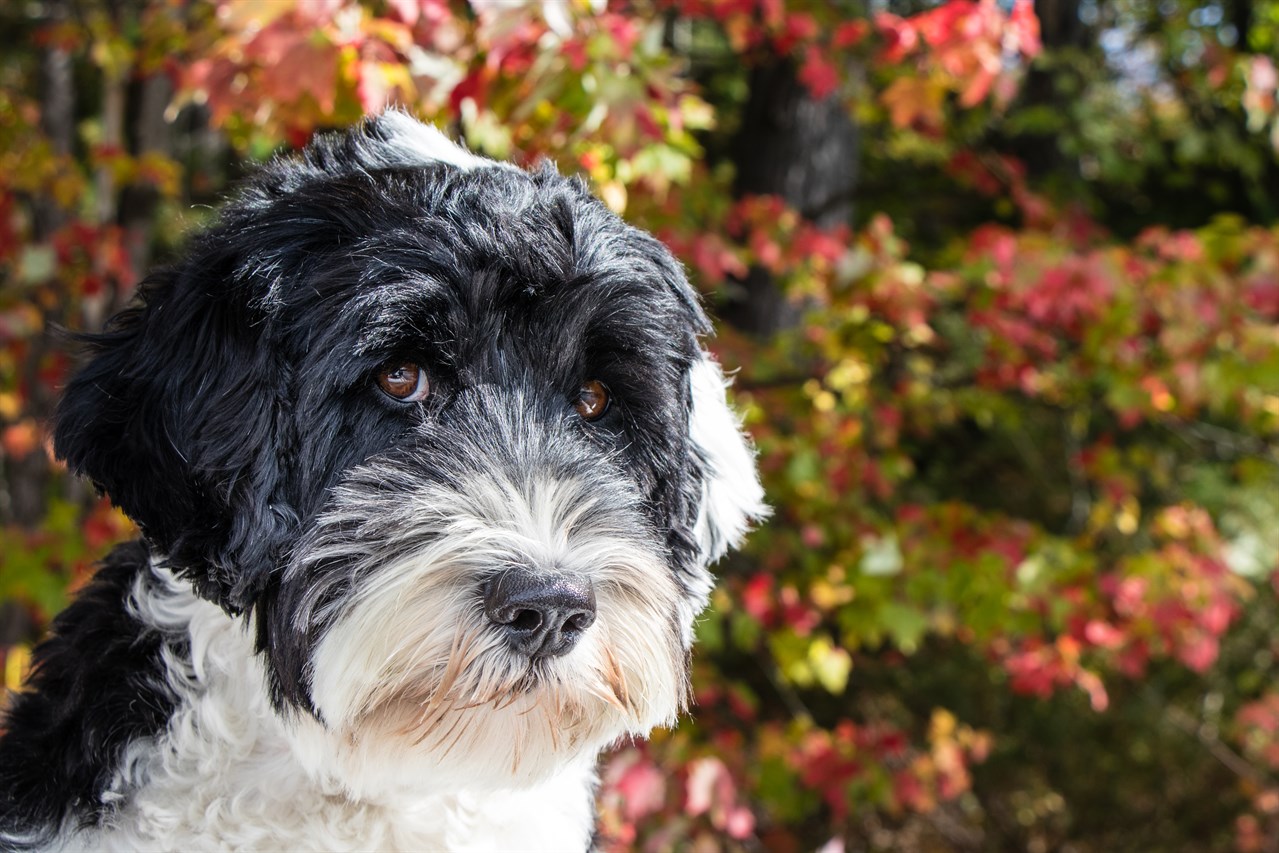The Portuguese Water Dog: A Spirited Sailor and Faithful Companion

The Portuguese Water Dog, or PWD for short, is a captivating breed that has left its paw prints on the shores of history. Known for its distinctive appearance and exceptional aquatic abilities, the Portuguese Water Dog is a breed that has earned a special place in the hearts of dog enthusiasts worldwide.
Breed History
The history of the Portuguese Water Dog is a tale intertwined with Portugal's rich maritime heritage. These dogs, originally called "Cão de Água" or "Cão de Água de Pêlo Encaracolado," served as invaluable companions to fishermen along the Portuguese coastline. Their primary role was to assist in fishing by herding fish into nets, retrieving lost tackle, and even acting as couriers between ships.
Over time, the Portuguese Water Dog evolved to develop their iconic waterproof coats and strong swimming abilities. The breed's keen intelligence and unwavering loyalty endeared them to their human companions. Their existence was closely tied to the survival of Portuguese fishermen, and their skills were a crucial asset in the industry.
Also Known As
The Portuguese Water Dog is also known as the Cão de Água by lovers of the breed.
Breed Group
The Portuguese Water Dog belongs to the Working Group in most kennel clubs. This classification reflects the breed's strong work ethic, intelligence, and willingness to assist humans in various tasks.
Breed Size
Portuguese Water Dogs are classified as a medium-sized breed. Adult males typically stand between 51 to 58 cm at the shoulder, while females are slightly smaller, measuring between 43 to 53 cm . They usually weigh between 16 to 27 kg.
Breed Coat, Colour, and Appearance
One of the most distinctive features of the Portuguese Water Dog is its unique coat. These dogs come in two coat varieties:
Curly: This type features tight, curly hair that is both water-resistant and hypoallergenic. The curls can range from loose to tight, and they give the dog its iconic appearance.
Wavy: Wavy-coated Portuguese Water Dogs have a more relaxed, less curly coat that is also water-resistant.
The breed's coat can be black, white, brown, or a combination of these colours. Black and white, and brown and white combinations are common. A solid black or brown coat is also seen.
In terms of appearance, the Portuguese Water Dog has a sturdy and well-muscled build. Their expressive eyes convey intelligence and a gentle disposition, while their ears hang close to the head. Their tail is thick at the base and tapers to a point.
Can You Get Portuguese Water Dogs in Australia?
Yes, Portuguese Water Dogs are available in Australia. While they may not be as common as some other breeds, there are reputable breeders and rescue organisations dedicated to the breed. Prospective owners should do their research and work with responsible breeders or adoption agencies to ensure they are getting a healthy and well-socialised dog.
What Dog Breed is Similar to Portuguese Water Dog?
One breed that shares similarities with the Portuguese Water Dog is the Spanish Water Dog. Both breeds have a history of working alongside fishermen and share a penchant for water-related activities. They also have curly or wavy coats that are adapted to aquatic environments. Additionally, the American Water Spaniel and Irish Water Spaniel exhibit some similarities in terms of their love for water and retrieving.
Is Portuguese Water Dog Rare?
The Portuguese Water Dog is not as common as some other breeds, but it is not considered extremely rare either. Their numbers have increased in recent years due to their popularity as family pets. However, it's essential to ensure that you obtain a Portuguese Water Dog from a reputable breeder to maintain the breed's health and temperament standards.
Are Portuguese Water Dogs Waterproof?
Yes, Portuguese Water Dogs are renowned for their waterproof coats. Their curly or wavy fur is specially adapted to repel water, keeping them buoyant while swimming. These dogs have webbed feet, which aid in swimming, and their love for water activities makes them excellent water companions. Their waterproof coats also make them hypoallergenic, making them an ideal choice for individuals with allergies.
In conclusion, the Portuguese Water Dog is a breed deeply rooted in history, with a rich maritime heritage and versatile abilities. Their curly or wavy waterproof coats, medium size, and keen intelligence make them cherished family members and working partners. While not extremely common, they can be found in various parts of the world, including Australia. When considering adding one to your family, always seek a responsible breeder or rescue organisation to ensure a happy and healthy life for your furry friend.
Continue reading our Portuguese Water Dog in-depth articles
- Portuguese Water Dog Temperament and Behaviour
- Portuguese Water Dog Training and Socialisation
- Portuguese Water Dog Toilet Training
- Portuguese Water Dog Barking Habits
- Portuguese Water Dog Grooming Requirements
- Portuguese Water Dog Shedding Behaviour
- Portuguese Water Dog Sleeping Behaviour
- Portuguese Water Dog Diet and Feeding Requirements
- Portuguese Water Dog Average Lifespan
- Portuguese Water Dog Exercise Requirements
- Portuguese Water Dog Common Health Issues
- Portuguese Water Dog Suitability Guide
- Portuguese Water Dog Advantages
- Portuguese Water Dog Disadvantages
- Portuguese Water Dog Cost to Buy and Own
- Portuguese Water Dog Clubs and Links
- Selling Portuguese Water Dog Puppy Litters and Dogs
- Buying Portuguese Water Dog Puppies and Dogs
- Portuguese Water Dog Alternatives
Portuguese Water Dog puppies for sale
- Find Portuguese Water Dog puppies for sale in ACT
- Find Portuguese Water Dog puppies for sale in NSW
- Find Portuguese Water Dog puppies for sale in NT
- Find Portuguese Water Dog puppies for sale in QLD
- Find Portuguese Water Dog puppies for sale in SA
- Find Portuguese Water Dog puppies for sale in TAS
- Find Portuguese Water Dog puppies for sale in VIC
- Find Portuguese Water Dog puppies for sale in WA